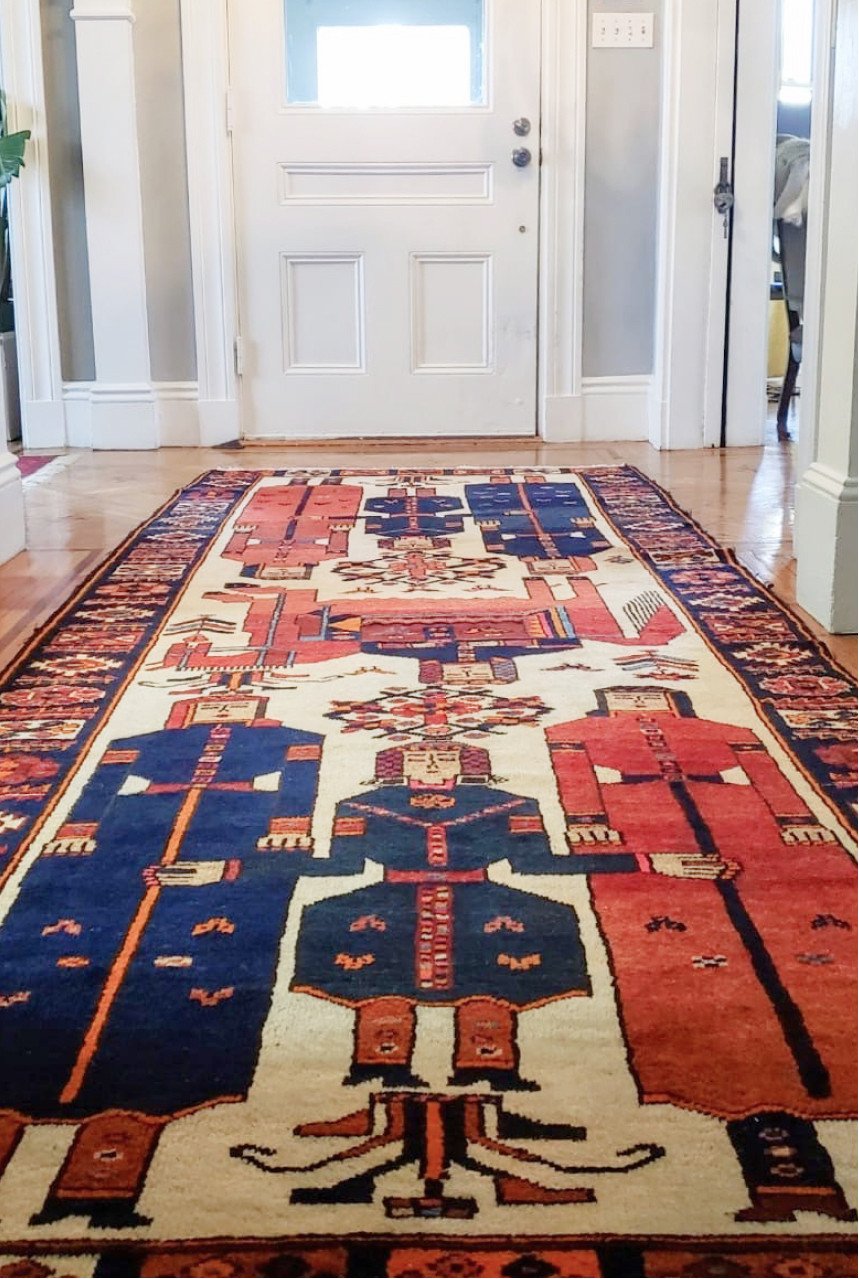We move next to dyes, which generally come in two kinds: natural or artificial. Artificial dyes, also known as chemical colors, are factory produced on a mass industrial scale. Some are decent but for the most part they are commercial and do not last long. Natural or organic dyes, however, are the main part of any old carpet’s success. They are mostly of a vegetable origin but the most exclusive are derived from insects such as cochineal. Preparing natural dyes relied on ancient recipes passed down from father to son and jealously guarded. The dye maker, known as the sabbagh, would guard his recipes jealously and would gather his ingredients from the herbs and roots of the local area. Recipes for the basic colors varied from area to area, depending on the multiple components to each. This is why red, for instance, seems closer to burgundy or cherry in some places while in others it looks more like brick or peach red. With the passage of time, the colors of a carpet acquire a patina of age as they mellow out. How to explain this? This is a simple scientific process called oxidation whereby the oxygen molecules in our atmosphere react with certain chemical in the natural dyes (which after all have a chemical composition like everything else around us) and in a way the latter “evaporate” leaving the wool or silk looking slightly softer. On the artistic side, we have the design of a carpet. A pattern in rural or tribal societies was usually memorized and passed down across generations from mother to daughter. This is why we see great uniformity in the design of nomadic rugs like those of the Turkmen, while allowing for the individuality of expression of each weaver. At times—very, very rarely—the more proficient weavers would weave a sampler rug known as a vagireh that contained the basic elements of field and border design and give it to her daughter(s). These were never meant for commercial sale or use and therefore have become greatly prized and demanded today. In urban societies where carpets are made in professional workshops, their designs are themselves created by professional artists. In the past they were drawn on paper but today they are created using professional graphic design software.
Once these components are all locked in—the material science and the art—the weaver would then engage in engineering to create a carpet. This is a story for another day however!

Purchasing carpets from Hadi Maktabi was the epitome of professionalism and joy. Hadi is an expert curator, purveyor, historian and story teller. His passion, knowledge, professionalism and expertise are evident every step of the way. With a wide range of choices and prices, prompt service, and fast sipping, we had our carpets in Sydney in a matter of days. The ultimate flying carpet experience! Zeina Tebbutt, Sidney, Australia 🇦🇺
“You don’t just buy a rug from Dr Maktabi... It’s an experience, a rich one! You learn about history, culture & art. And more importantly you feel euphoric!” Dr Siamak Abolhassani, Expert Medical Care Clinics, Victoria, Australia 🇦🇺
I have been buying and collecting oriental rugs for over 40 years. As a result I have had direct experiences with many dealers and galleries throughout Europe, North America, the Middle East and Asia. The Hadi Maktabi establishment is distinct and unique. It is rare to find a dealer who not only has a discerning taste and excellent choice of rugs. But with Hadi, the experience is one of an erudite oriental rug scholar paired with years of family experiences and traditions dealing in rugs, carpets and textiles. The available choices, diversity and quality of his stock is awesome. It is always a pleasure. Highly recommended and satisfying. As a collector he has become not only a partner of choice, knowledge and information but also a valued friend. Robert Bell, CEO Royal Brompton & Harefield NHS Foundation Trust, U.K. 🇬🇧